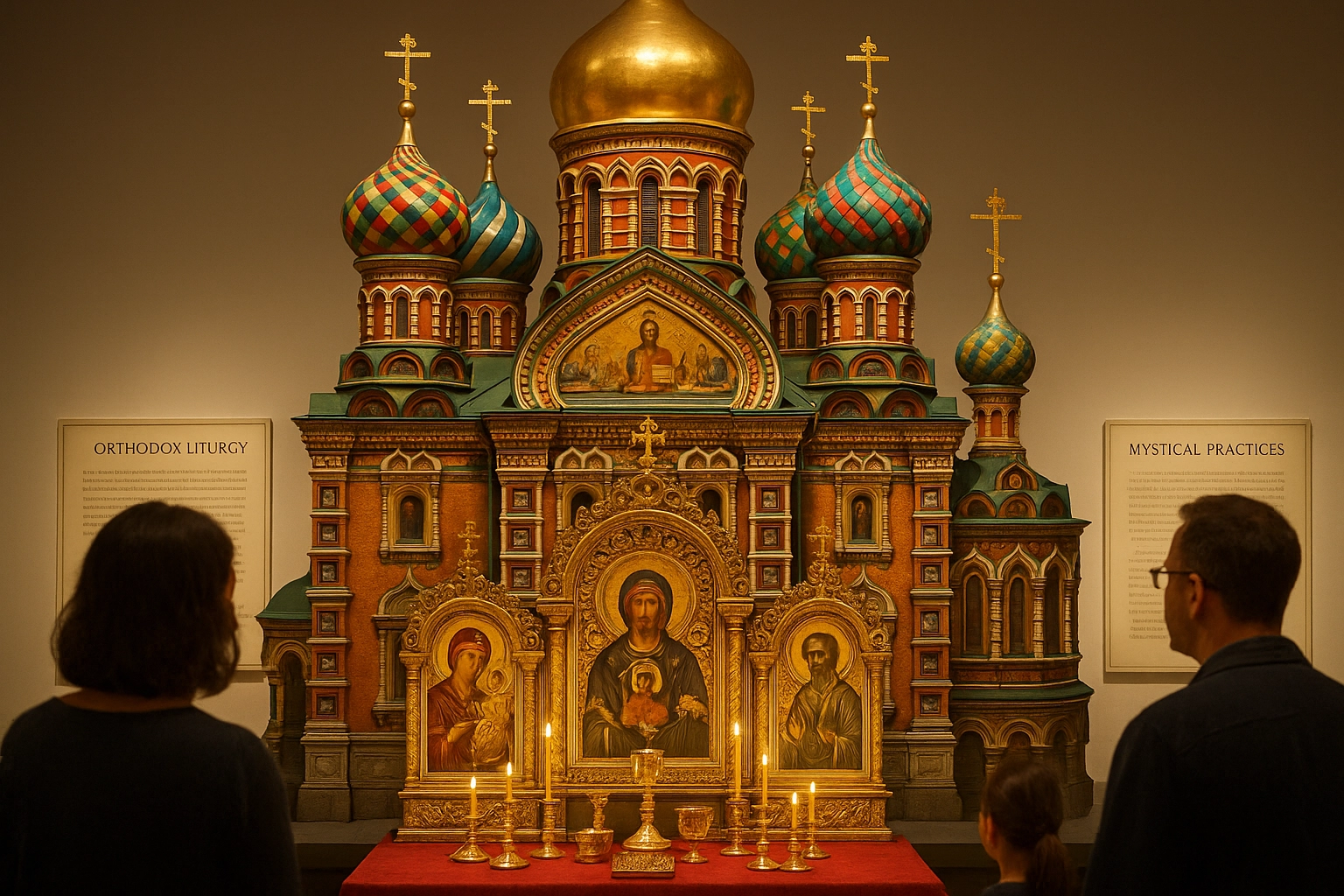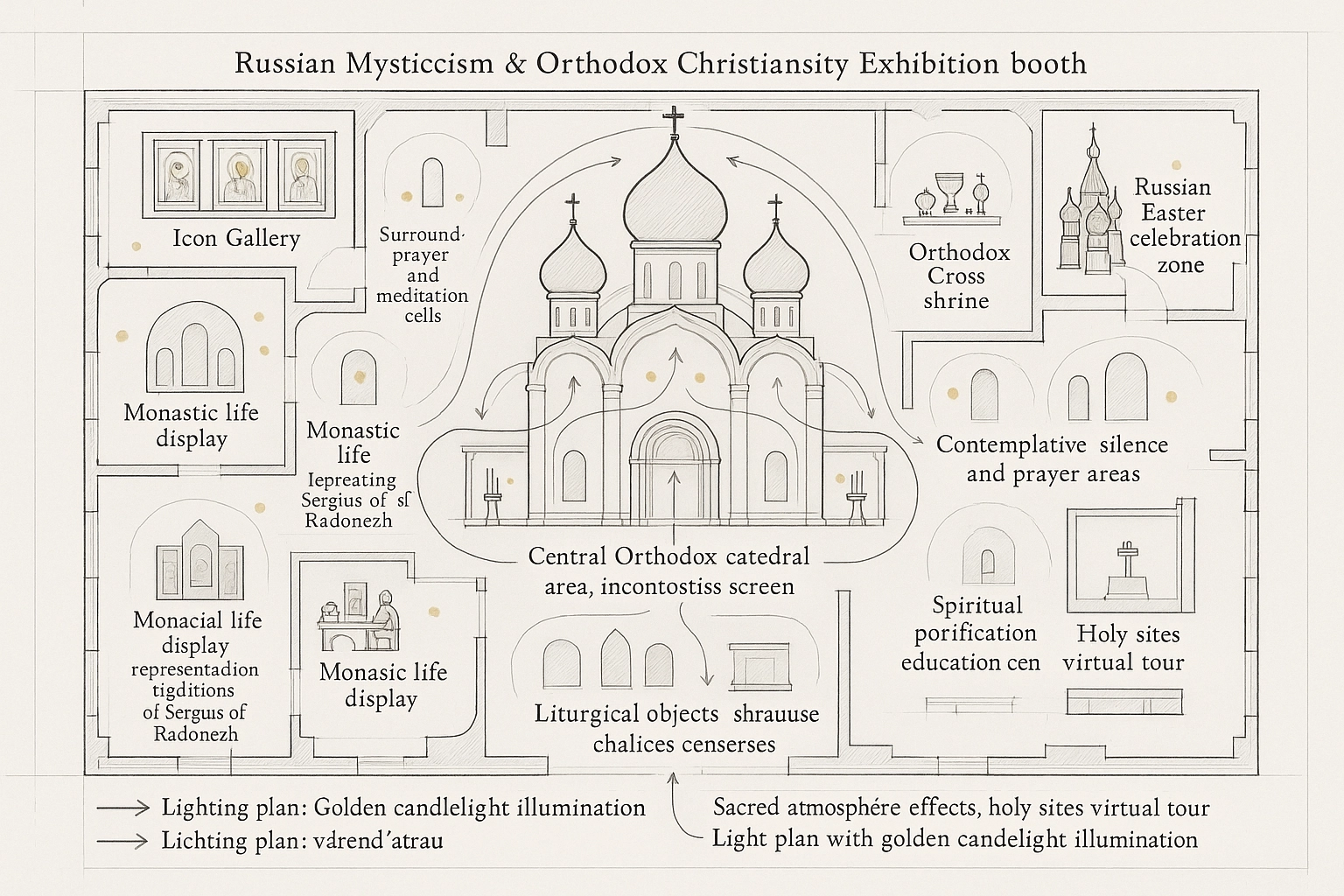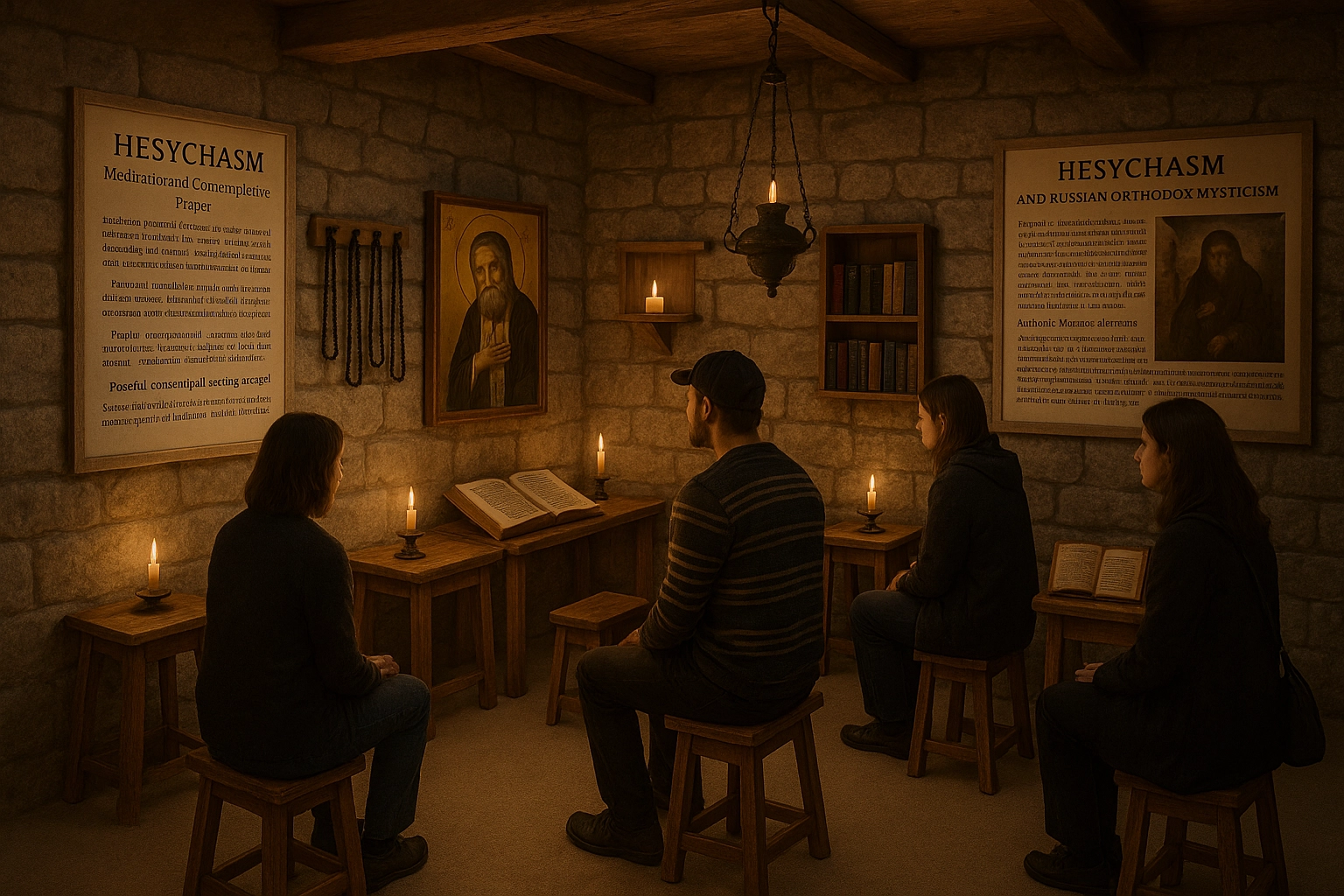Russian Mysticism & Orthodox Christianity Exhibition
Discover the profound spirituality and mystical traditions of Russian Orthodox Christianity through our immersive exhibition experience
Exhibition Layout & Experience

Exhibition Floor Plan
Interactive layout showing prayer corners, icon gallery, and monastery chapel

Main Exhibition Hall
Featuring sacred icons, prayer spaces, and informational displays about Russian mysticism

Sacred Chapel Display
Traditional Orthodox sanctuary with iconostasis symbolizing the divine presence
Historical Origin
Russian Orthodox Christianity traces its roots to the official conversion of Kievan Rus in 988 CE, when Prince Vladimir the Great adopted Byzantine Christianity as the state faith. Drawing on deep Byzantine influences, Orthodox spirituality soon merged with indigenous Slavic mysticism and asceticism.
Formation & Development
The Russian Orthodox Church developed through monastic communities, cathedral building, and the translation of liturgical texts into Church Slavonic. Spiritual movements like Hesychasm—focused on silent heart prayer—shaped Russian mysticism, surviving Mongol invasions, imperial reforms, and communist repression.
Key Figures & Luminaries
Prince Vladimir the Great (c. 956–1015)
Brought Christianity to Russia, canonized as a saint.
St. Sergius of Radonezh (1314–1392)
Monastic reformer and founder of the Trinity Lavra.
St. Seraphim of Sarov (1754–1833)
Famous ascetic, elder, and mystic known for compassion and miracle-working.
Core Concepts & Beliefs
Theosis (Deification)
Ultimate spiritual goal—union with God through purification, prayer, and love.
Hesychasm
Contemplative practice centered on the Jesus Prayer and inner stillness.
Icon Veneration
Icons as "windows to heaven" and means of participating in divine reality.
Mystical Theology
Emphasis on experience of divine light and direct encounter with God.
Fundamental Principles
Unceasing Prayer
Heart purification through constant remembrance of God.
Love & Humility
Expressing divine love through forgiveness and compassion.
Reverence for Tradition
Honoring the saints and apostolic teachings.
Liturgical Beauty
Sacred art, music, and symbolism as pathways to the divine.
Sacred Symbols
Three-bar Orthodox Cross
Symbol of Christ's crucifixion and resurrection.
Onion Domes
Colorful cupolas symbolizing heavenly ascent.
Icons
Sacred images of Christ, Theotokos, and saints.
Prayer Rope
Komboskini used for counting Jesus Prayers.
Major Rites & Rituals
Divine Liturgy
Central communal worship with Eucharist communion.
Daily Prayer Cycles
Chanting in Church Slavonic throughout the day.
Great Lent
Intensive fasting and prayer seasons.
Icon Veneration
Prostrations and reverence before sacred images.
Global Influence & Cultural Impact
Global Influence
The Russian Orthodox Church is the world's largest Eastern Orthodox community, with over 100 million adherents in Russia, Eastern Europe, Central Asia, and the global Russian diaspora.
Cultural Impact
Orthodoxy shaped Russian national identity, artistic achievements (icons, choral music, church architecture), and moral philosophy. It influenced literature through Dostoevsky and Tolstoy.
Geographical Spread
Originating in Kievan Rus, Russian Orthodoxy became dominant from the Baltic to the Pacific, remaining central in Russia, Ukraine, Belarus, and present in the Americas and Europe.
Major Spiritual Texts
Bible (Orthodox Canon)
Slavonic and Russian translations
Philokalia
Classic anthology of mystical writings
The Way of a Pilgrim
Classic account of Jesus Prayer practice
Lives of the Saints
Hagiographies and spiritual guidance
Sacred Places & Monuments
Trinity Lavra of St. Sergius
Spiritual center of Russian Orthodoxy in Sergiev Posad
St. Basil's Cathedral
Symbol of Russian Orthodoxy's artistry and faith in Moscow
Optina Monastery
Center of Russian monastic and mystical tradition
Kiev Pechersk Lavra
Ancient cave monastery and spiritual pilgrimage center
Memorable Quote
"Acquire the spirit of peace, and thousands around you will be saved."— St. Seraphim of Sarov